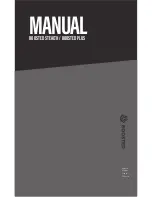
4 Inspection procedures
18
en
XL-SA30000RM-en-DE Rev A • 02.2016 • Errors and changes excluded © SAF-HOLLAND
4.3.8 Checking the actuation interface
Danger!
●
Wear respiratory protection in order to avoid
inhaling particles which can be hazardous to
health! Brake pad wear produces dust which can
cause lung damage!
●
Pressure from lines and components must be
released before they are opened!
●
If a brake chamber is installed with a spring
mechanism, it must be ensured that the spring is
mechanically safeguarded during removal, see
„3.2.1 Lifting and supporting the vehicle
Caution!
●
Take care when using chemicals and/or cleaning
tools (e.g. knives, brushes, etc.). This to avoid
damage or displacement of hoses, seals and
other components.
●
Use a vacuum cleaner to clean the surfaces. Do
not use compressed-air.
B
A
Fig. 23 -
Mating surfaces of the brake chamber and brake calliper
This inspection procedure covers both types of brake
chamber; normal (service) and spring brake (parking)
chamber.
1. Read and follow
inspecting the actuation interface.
2. Thoroughly clean around the mating surfaces of
the brake chamber (A) and brake calliper (B) to
ensure that dirt does not get into the mechanism
area when removing the brake chamber,
3. Release the parking brake, see
F
A
E
B
Fig. 24 -
Removing the brake chamber components
4. If applicable, ensure that the spring brake chamber
(F) is fully disengaged and mechan
-
ically secured in this position.
5. Ensure that the brake chamber is depressurised.
6.
Remove the two nuts (E) holding the brake cham
-
ber. Remove the brake chamber (A/F) from the
brake calliper (B),
Fig. 25 -
Piston rod
7. With the brake chamber removed and secured, the
brake chamber piston rod should protrude approx.
.
8. With the service brake activated, the brake cham-
ber actuation rod should protrude approx. 72 mm
- 80 mm (depending on the brake chamber type).
9. In addition, check that the actuation rod extends
perpendicular to the external seal flange.
















































